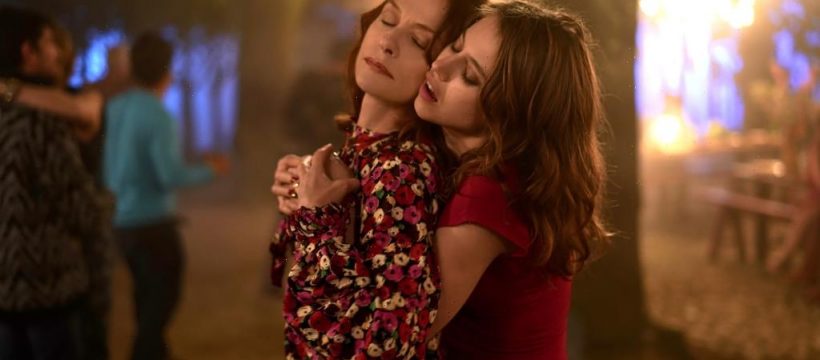French icon Isabelle Huppert would love to play a Disney villain — except she would make her a bit “more lovable,” she laughs. “It’s scarier when you make them a bit more lovable and attractive and more manipulative instead of doing it like a classical villain.”
In “White as Snow,” a playful twist on the Snow White tale, Huppert is Maud, a aging hotelier who worries about her stepdaughter Claire (Lou de Laâge), a pure woman who is the object of Maud’s jealousy. Directed by Anne Fontaine and in theaters now, “White as Snow” puts a modern twist on the oft-adapted story.
Huppert talked about her collaboration with Fontaine and playing the character who nods to the iconic wicked stepmother.
It’s been quite a year — how have you been doing this past year and a half?
I’ve been very lucky because I’ve been working a lot. I’ve been doing movies and I’ve been working on stage recently. I did four movies over the last year.
I was meant to do my last play in New York, but that had to be canceled, but compared to what happened to so many people, it was not too bad.
You collaborated with Anne Fontaine again, what did she tell you about “White as Snow?
The first time we collaborated was on “My Worst Nightmare” and I loved working with her. She’s so smart and has this great sense of humor. She knows how to make comedies with substance.
That was the case for “White as Snow” — it was a rereading of the original story, with a different insight and a contemporary input making her more sexual and aware of her own desires and physicality.
I loved playing Maud. She is the victim of her own passion and she is this woman who is madly in love. She is destroyed by that love and she becomes that monster. It’s a very contemporary interpretation of the bad and the good and desire. I thought it was so interesting to show the myth of Snow White through this new lens.
We see the layers of Maud being peeled off as the film going on, what was it like exploring her and unpacking this character?
Usually, in the classical vision of the tale, you have this good and the bad, and that narrows her. So here, I was able to make her gentle, but underneath she’s nasty. There’s this shadiness to her. And that was far more interesting to portray her through this tactical vision and story of the character.
Emmanuelle Youchnovski was the costume designer on the film, did you collaborate with her over Maud’s red wardrobe?
We didn’t spend that much time. I could tell she had a clear vision for Maud. I loved the first red outfit because it was this great contrast between that and the blue of the pool.
The apple and the mirror are all there which are treats that recall the classic. She goes to see the woman too about her future, and the character is quite sophisticated.
Sometimes she wears black jeans too, but there’s a scene later when Maud is in the car with the headscarf, and that is a classical and iconic image. I loved that Grace Kelly homage, and all of a sudden you find yourself in an Alfred Hitchcock movie. So that was a great thing Emmanuelle did with the costume – paying homage there.
Towards the end, there’s that energetic dancing scene with Claire, and Maud is uninhibited and free, can you talk about filming that dance scene?
We tried to choreograph the scene as much as possible, but it was a mix of something quite prepared and yet free. We chose the music to fit that scene because that moment is very wild and sexual, and turns into something saved. I was inspired by the music for that.
I love that scene because you can’t tell whether she’s drawn by joy or hate. It’s always interesting to play that blend of passion, savagery and cruelty. That dance was a perfect metaphor from Maud’s side of what’s going on between the two women.
It was an intense shoot. It took a part of the night [to film that scene].
Where did you shoot?
We shot in Valence, which is in the southeast of France which is so beautiful and has these incredible landscapes – mountains and countryside.
So, would you ever want to play a Disney villain?
Yes, of course, I would. I would make her more lovable. It’s scarier when you make them a bit more lovable, attractive and manipulative instead of doing it like a classical villain.
We had a different ending where I was destroyed and wounded for life and my face was distorted, but Anne changed that ending, going for the more classical ending to my character. But, I would love to do that. It’s so interesting when you can make her attractive and manipulative.
Source: Read Full Article
